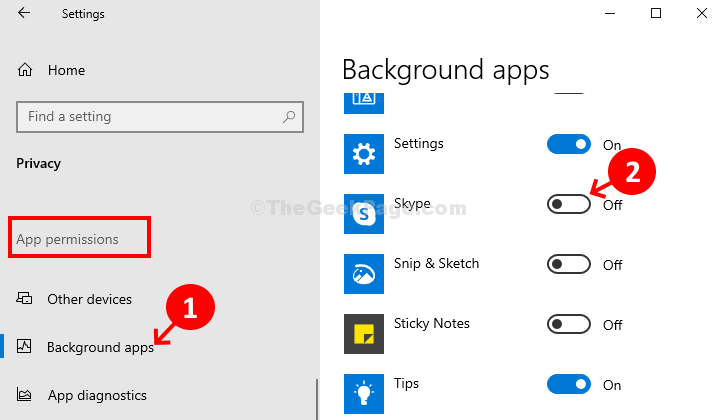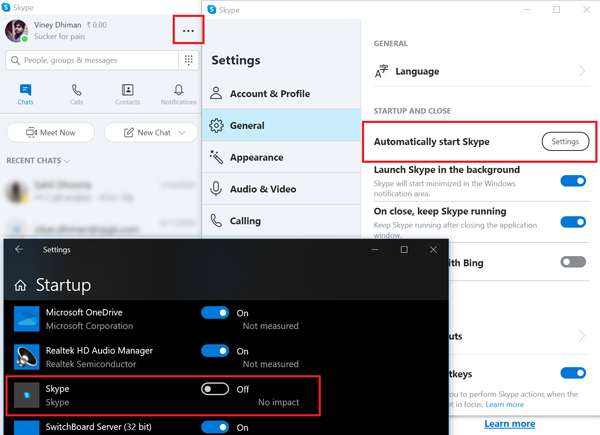
Using the option the comes in-built of Skype. However, if you don’t want to keep this feature enabled for your Skype account, you can easily prevent it from launching automatically by following these steps: Steps to Prevent Skype from Launching Skype Automaticallyīasically, there are two ways you can stop Skype from starting automatically: The desktop comes with numerous features among which one that users generally don’t notice but comes very handful is automatic loading of Skype application every time a user starts his or her computer.īy default, this feature is enabled automatically and lets you have instant notification of the message you receive on Skype when you start your computer. While the web version of Skype comes with certain limitations, the desktop version of Skype is widely used by users. Navigate to the following location:Įnsure that you have selected Background Apps on the left-hand side, scroll down on the right until you find the entry for Skype and change the slider to Off.Available as both web and desktop applications, Skype is an excellent means of communication for carrying out both business and personal purposes alike. In other words, Skype UWP users simply need to logoff from within the app to prevent it from starting automatically during a subsequent Windows 10 login.Īs a potentially viable alternative to the Skype Community Moderator’s advice, you can turn off the background app functionality for Skype. We won’t sign you in automatically after that. 
If you prefer not to be signed in automatically on Skype for Windows 10, you can sign out from the app. To maximize Skype UWP you will just need to click on the application icon. If you close your computer without signing out of the Skype UWP application, then on next computer boot, Skype will auto run in the background. The classic Skype for Windows Desktop is a Win32 application, Skype UWP is not. Windows apps are not managed the same way as a Win32 application.

The new Microsoft Skype for Windows 10 (Skype UWP) application has never been present in the Startup tab.






 0 kommentar(er)
0 kommentar(er)
